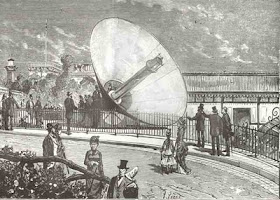.
EcoloCap is Making Moves
in
India
in
India

Just picking up the buzz that EcoloCap, one of the serious nano-battery contenders, has signed an agreement, though I would think not quite a contract as yet, with the authorities in Delhi to supply, operate and maintain approx 1,500 electric buses for the next 10 years.
I have attempted to translate the business-speak into English. Apologies if I got some facts skewed in the process.
It seems that EcoloCap CEO Michael Siegel has been on a visit to India and the discussions have focused on three possible areas of their battery applications in India:
1) Using the EcoloCap battery to convert several bus routes into an all electric fleet.
2) The use of an EcoloCap battery in electric taxis, with a production start date of Sep 2010, and an initial production figure of 10,000 units. First all-electric taxis introduced to the streets by Dec. 2010.
3) The design modifications needed to migrate production facilities to the production of delivery trucks etc.
The first batteries would be assembled in India under an agreement yet to be fully defined. In the meantime final design and longevity testing is now underway, and will last a month. IMHO a month seems a very short time to do longevity tests on anything - especially electro-chemical devices - but what do I know!
Michael Siegel EcoloCap CEO said; "The electric vehicle will eventually play an important role in Indian society. The Nano battery is the only battery now considered for these applications because of the price and power density. We plan to deliver sample batteries to be used in 200 three wheelers for the 2010 Commonwealth Games to be held in New Delhi."
It is an exciting bit of action - hope it works out.
www.EcoloCap.com
.














